Introduction to Energy Efficiency for Autism-Friendly Homes
Creating homes that cater to both the energy efficiency and sensory needs of individuals with autism is of paramount importance. Such environments help in minimizing sensory overload while reducing energy consumption and costs. The integration of smart home technologies, renewable energy solutions, and sustainable living practices can support the unique requirements of autism families, enhancing both their quality of life and financial welfare. This article delves into practical strategies, financial benefits, and the specific challenges involved in designing autism-friendly homes that are energy-efficient.
General Energy-Efficient Strategies for Autism Homes
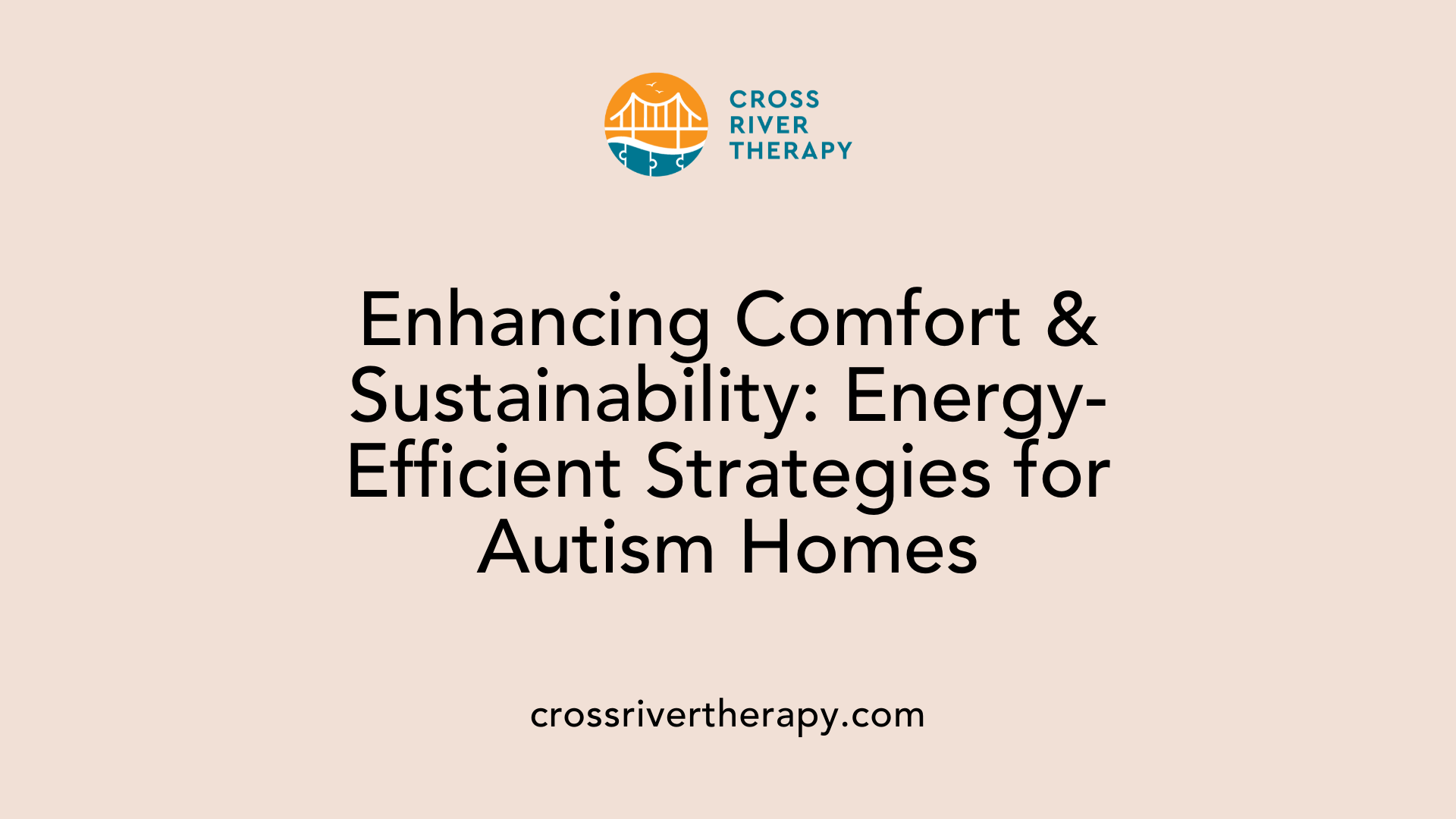
What are some general energy-efficient strategies that can be applied to home environments for individuals with autism?
Energy-efficient strategies for homes accommodating individuals with autism focus on creating a comfortable and safe environment. One essential element is the use of energy-efficient lighting. LED bulbs, for instance, consume up to 75% less energy than traditional incandescent bulbs and produce less heat. Their ability to offer adjustable brightness helps minimize glare and visual overstimulation for sensitive individuals.
Incorporating smart home technology further enhances adaptability in the living space. Smart thermostats can learn daily routines, optimizing temperatures automatically to maintain a stable climate. This feature is particularly beneficial for individuals sensitive to temperature changes, providing consistent comfort and reducing anxiety related to sudden fluctuations.
Implementing solar energy solutions is another effective strategy. By utilizing solar panels, families can significantly reduce their reliance on fossil fuels and lower electricity bills. Estimates show families can save between $600 and $1200 annually on energy costs. This financial relief allows resources to be redirected toward care and support services essential for individuals with autism.
Creating quiet spaces within the home is also crucial. Designated areas equipped with soft furnishings, calming colors, and sound-absorbing materials can serve as retreats for individuals feeling overwhelmed. Establishing these calming environments ensures that families prioritize sensory needs, creating a supportive atmosphere that enhances overall well-being.
Incorporating these strategies solidifies a more accommodating and energy-efficient home for individuals with autism, enhancing their quality of life while promoting sustainability.
Adapting Sustainable Living Practices for Sensory Needs
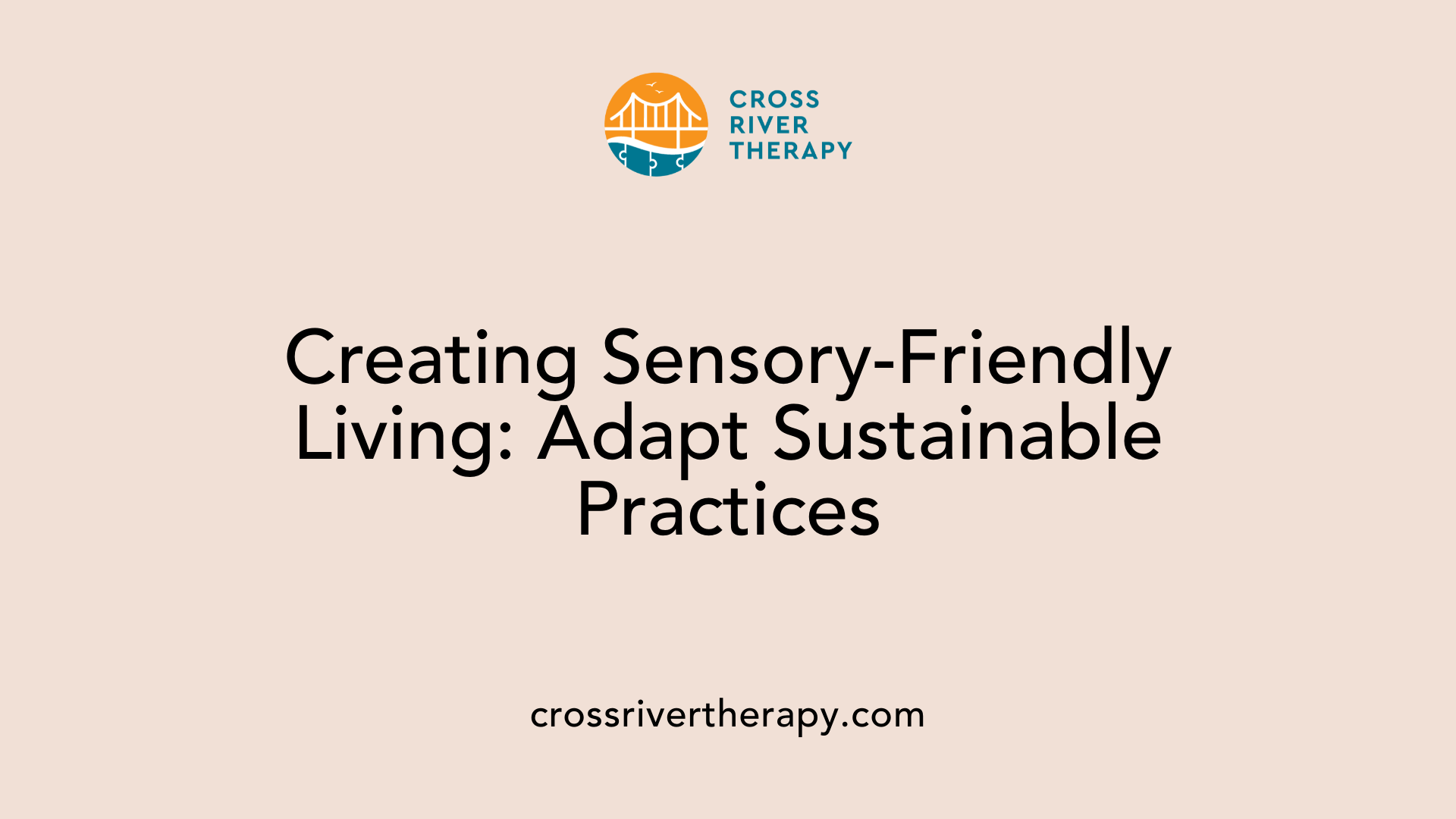
How can sustainable living practices be adapted to meet the sensory needs of autism families while saving energy?
Creating a sensory-friendly environment for families with autism can significantly improve comfort while also promoting energy efficiency. Sensory-friendly design starts with a conscious selection of color palettes and materials. Soft, neutral colors reduce visual overload, while cozy textures in furnishings create a comforting atmosphere. Suitable design elements might include quiet spaces, like reading nooks, equipped with noise-canceling features and calming decor.
Non-toxic materials play a substantial role in enhancing indoor air quality, essential for reducing irritability in individuals with sensory sensitivity. Choosing low-VOC paints, sustainable flooring, and furniture made from natural fabrics minimizes exposure to harmful chemicals, creating a healthier home environment.
Eco-friendly routines can also be integrated into daily life. Simple practices like establishing dedicated quiet times or meditation zones promote relaxation and emotional regulation. Families can implement energy-saving strategies such as using LED lighting to minimize glare, and smart home technologies to automate adjusting indoor climates, optimizing comfort according to users’ sensory needs.
Engaging in activities like gardening or nature walks not only aligns with sustainable living practices but also provides sensory exploration opportunities, bridging the connection between nature and emotional well-being. Ultimately, collaborating with autistic individuals to gain insights into their preferences is vital, ensuring that spaces effectively merge sensory comfort with energy efficiency.
The Role of Smart Home Solutions in Autism-Friendly Living
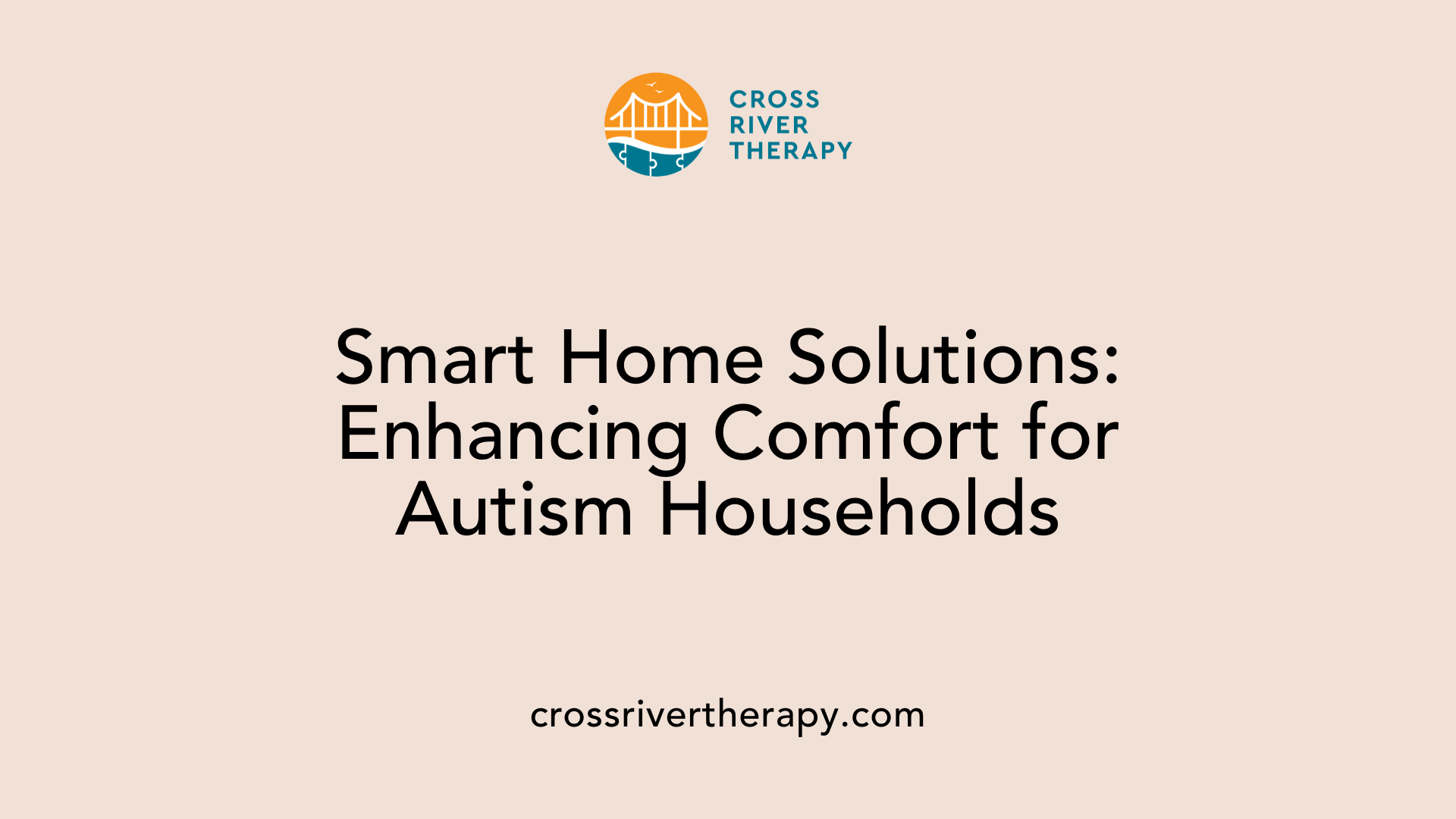
What role do smart home solutions play in enhancing comfort and managing energy for autism households?
Smart home solutions are transforming the living environment for families with autism by creating customizable spaces that cater to unique sensory needs. One of the most significant components is smart thermostats, which automatically adjust indoor temperatures based on user behavior and preferences. This ensures a consistent climate, helping to alleviate discomfort associated with temperature fluctuations that can trigger sensory overload.
Similarly, automated lighting systems enable families to modify brightness and color settings. This flexibility reduces glare and creates soothing atmospheres, essential for emotional stability in individuals with sensory sensitivities. With features like motion sensors, lights can dim or turn off in unoccupied spaces, thus conserving energy while maximizing comfort.
Furthermore, energy monitoring capabilities provided by smart home technologies allow families to track their daily energy usage. This insight helps in recognizing patterns, fostering predictable routines that reduce anxiety and unexpected energy spikes. By using these innovative technologies, families can save significantly on utility bills—sometimes between $600 and $1200 annually—enabling them to allocate financial resources towards crucial support services such as therapy and care. Ultimately, smart home solutions empower autism households by enhancing comfort, promoting safety, and improving overall quality of life.
Financial Benefits of Energy-Efficient Practices in Autism Homes
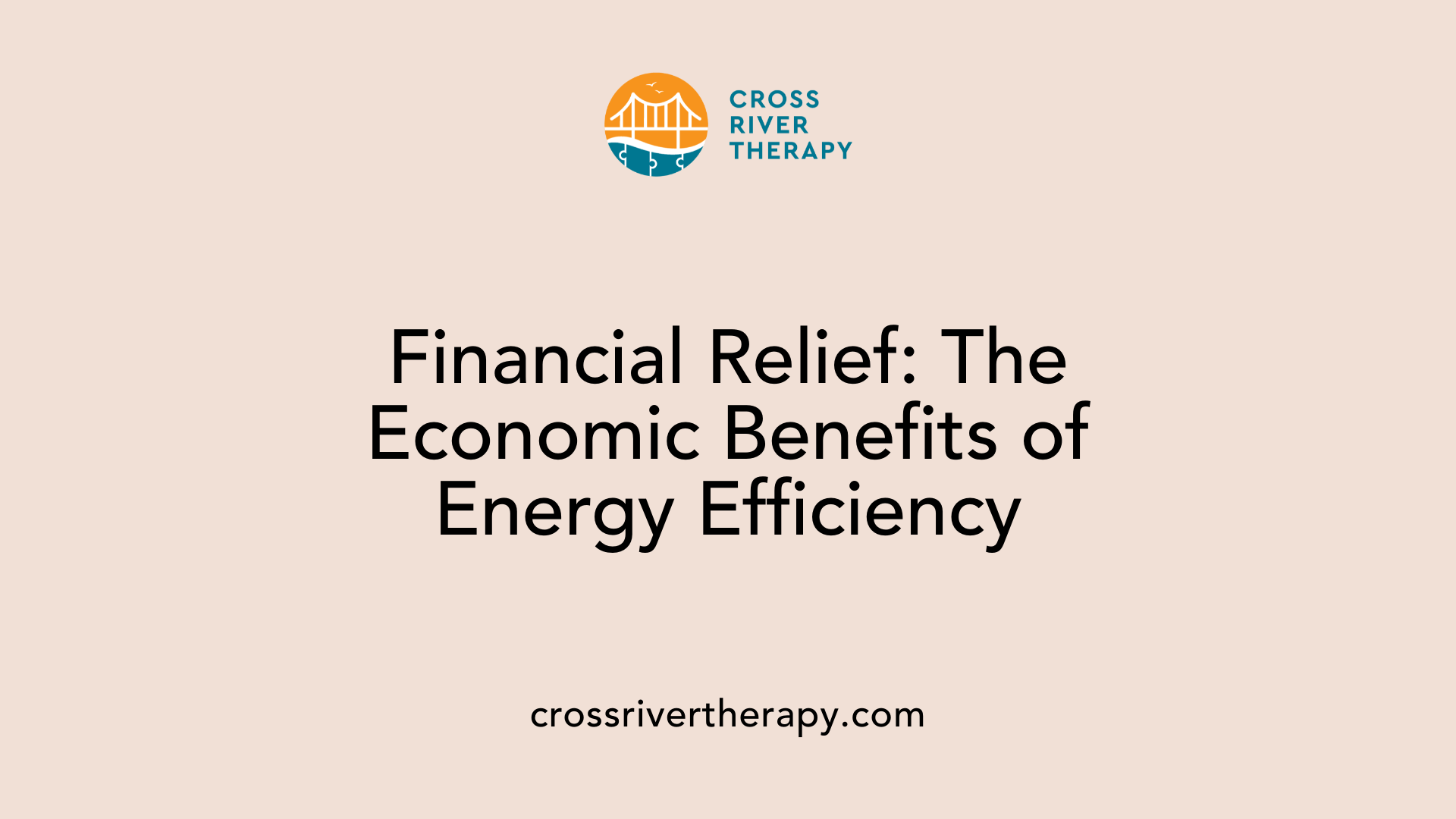
What financial implications and benefits are associated with adopting energy-efficient practices in homes affected by autism?
Adopting energy-efficient practices in homes affected by autism can lead to significant long-term financial benefits, primarily through reduced energy bills. This allows families to reallocate funds towards essential support services for individuals with autism. Energy-efficient homes can help lower monthly electricity costs by a substantial margin, with average annual savings ranging from $600 to $1,200.
Cost savings and energy-efficient upgrades
Many families can take advantage of various state and federal programs that assist with the costs of energy-efficient upgrades. These programs can ease the financial burden associated with autism care, making it more manageable. For instance, homes certified by ENERGY STAR ensure an average energy savings of 20%, contributing further to financial relief for families.
Renewable energy incentives
The implementation of renewable energy solutions, such as solar panels, brings even more significant savings. Average annual reductions in utility costs can range from $1,000 to $2,500, depending on the size of the system and energy consumption patterns. This shift not only enhances the quality of life through improved comfort and stability in living environments, but also ensures families have the financial resources necessary to cater to the unique needs associated with autism.
Financial support programs
Additionally, families may find financial support programs that provide grants, low-interest loans, or tax credits targeted at enhancing energy efficiency. Engaging in these strategies fosters an eco-friendly and economically viable living space that prioritizes the well-being of individuals with autism while also significantly reducing ongoing operational costs.
Overcoming Challenges in Designing Autism-Friendly, Energy-Efficient Homes
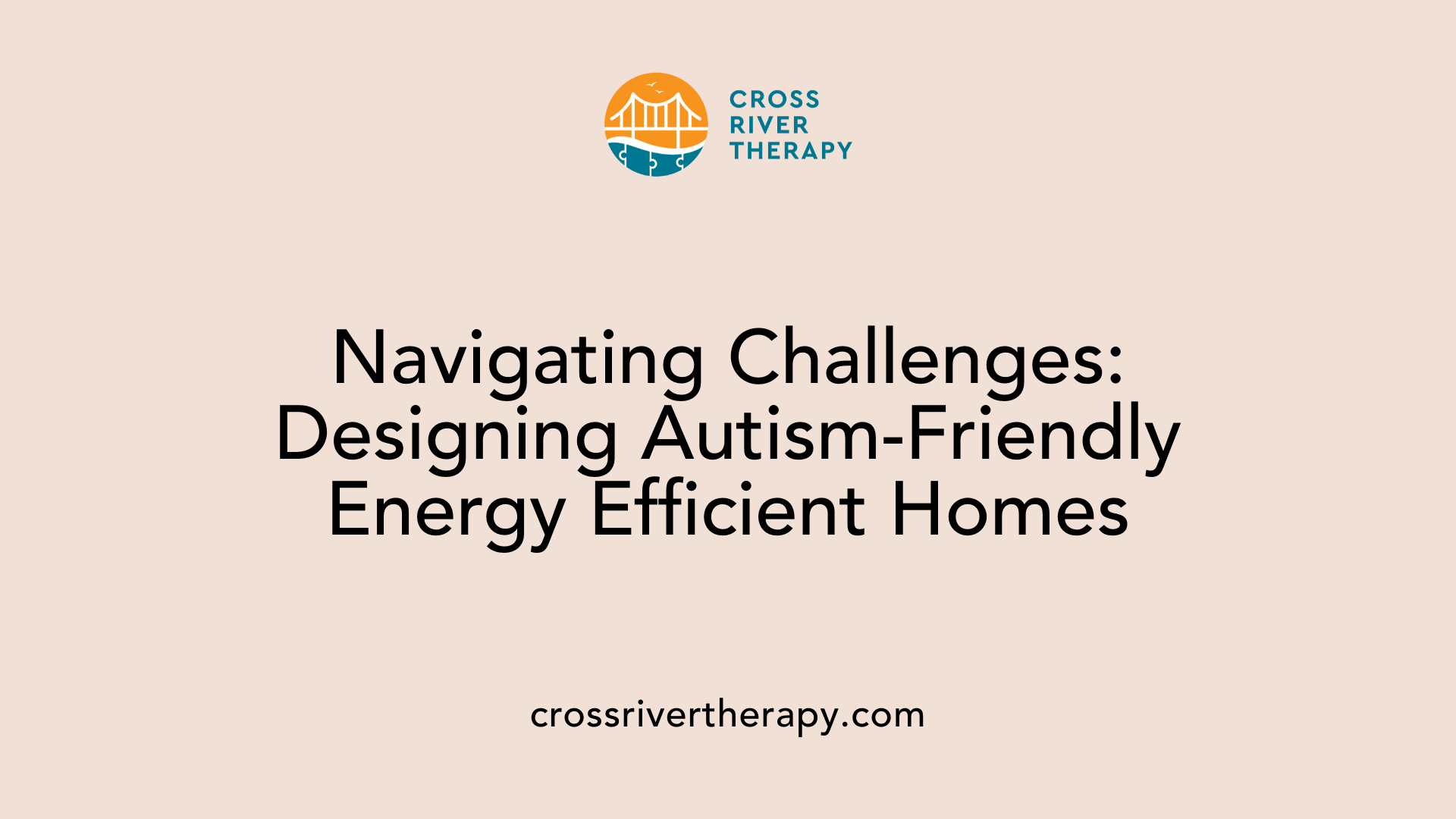
What are the specific challenges in designing energy-efficient, autism-friendly homes, and how can they be addressed?
Designing energy-efficient, autism-friendly homes presents unique challenges that require a thoughtful balance between energy savings and sensory needs. Key concerns include noise reduction, enhanced lighting control, and maintaining stable temperatures, all of which are essential for individuals with autism.
To address these issues:
Noise Reduction: Incorporating sound-proofing materials can minimize auditory distractions. This could include sound-absorbing panels or carpets that dampen noise, fostering a calmer atmosphere.
Lighting Control: Utilizing LED lighting systems that allow for adjustable brightness helps manage sensory overload by offering customizable settings. Dimmable lights can reduce glare, thereby creating a soothing environment that caters to various sensory sensitivities.
Stable Temperatures: Smart thermostats are vital for achieving temperature stability by learning household patterns and adjusting automatically. Proper insulation enhances temperature regulation further, which is crucial for comfort.
Effective ventilation systems also play an essential role by enhancing indoor air quality, thereby preventing the irritability that can arise from poor air conditions.
Moreover, incorporating calming color schemes and ensuring layouts are spacious can support emotional well-being while reducing sensory overload. Consulting with autism specialists during the design process ensures that the home meets the sensory needs of its residents while achieving energy efficiency.
By addressing these challenges with specific strategies, families can create environments that nourish the well-being of autistic individuals while promoting sustainability.
Integrating Renewable Energy for Sustainable Autism Homes
Solar Panelling for Financial Relief
Integrating solar panels into homes not only enhances sustainability but also provides substantial financial savings. Families can save between $600 and $1200 annually on electricity costs. This financial relief can then be redirected towards essential healthcare and support services for autistic individuals.
Energy-Efficient Appliances
Using Energy Star appliances is key in reducing household energy consumption. These appliances consume less energy than standard models, offering average savings of $100 to $150 each year on energy bills. They operate efficiently while contributing to improved air quality in the home, which is vital for individuals with sensory sensitivities.
Minimizing Environmental Impact
The adoption of renewable energy solutions, such as solar power, helps lower carbon footprints significantly. Families create healthier living environments while benefiting from decreased reliance on fossil fuels. Sustainable designs contribute positively not only to the autism community but also to the broader environment, promoting cleaner air and wellness in homes.
| Feature |
Benefits of Integration |
Impact on Families |
| Solar Panels |
Reduced utility costs, financial savings |
Funds allocated to care |
| Energy-Efficient Appliances |
Lower energy consumption, improved air quality |
Comfortable living spaces |
| Environmental Impact |
Lower emissions, sustainable lifestyle improvements |
Healthier environments for all |
Optimizing Lighting for Sensory and Energy Efficiency
LED Lighting Benefits
LED lighting is an excellent choice for autism-friendly homes as it uses up to 75% less energy than traditional incandescent bulbs. This significant reduction in energy consumption not only leads to lower utility bills but also contributes to a calmer environment. The adjustable brightness feature of LED bulbs allows families to customize lighting according to their preferences, minimizing glare and providing a soothing atmosphere conducive to relaxation.
Adjustable Lighting Systems
Integrating adjustable lighting systems can further enhance comfort for individuals with sensory sensitivities. Systems equipped with dimmers and smart controls allow for real-time modifications to brightness and color temperature. This adaptability helps create a tranquil ambiance, essential for reducing sensory overload and promoting emotional stability, ensuring the environment caters more effectively to each individual's unique needs.
Utilizing Natural Light
Natural light is another critical component of an energy-efficient and sensory-friendly home. Proper window placement and design can maximize sunlight penetration while minimizing harsh glare. Access to ample natural light has been shown to enhance the mood and well-being of individuals with autism, reducing the dependence on artificial lighting and contributing to a pleasant, calming living environment.
| Lighting Feature |
Benefits for Autism Spectrum |
Energy Efficiency |
| LED Lighting |
Reduces glare, adjustable brightness |
Uses 75% less energy than incandescent bulbs |
| Adjustable Systems |
Customizable settings for comfort |
Optimizes usage based on needs |
| Natural Light |
Enhances mood and comfort |
Decreases reliance on artificial sources |
Ventilation and Air Quality Solutions for Autism Homes
Air Filtration Systems
Effective ventilation and air filtration systems are essential in autism-friendly homes. They help to improve indoor air quality by filtering out pollutants and allergens, which can significantly minimize discomfort for individuals with sensory sensitivities. Enhanced air quality not only promotes physical health but also contributes to mental well-being by reducing irritability linked to poor air conditions.
Non-Toxic Materials
The incorporation of non-toxic, sustainable materials plays a vital role in maintaining a healthy living environment for autism families. Using materials that are free from harmful chemicals can help mitigate sensory overload often triggered by unpleasant odors and irritants. This consideration fosters a safer and more comfortable atmosphere, particularly for those who may react negatively to volatile organic compounds (VOCs).
Improved Indoor Air Quality
Improved indoor air quality is fundamental for creating supportive environments. Families can implement solutions such as regular maintenance of HVAC systems and investing in air purifiers. These strategies enhance air circulation and control humidity levels, further promoting emotional stability and comfort for individuals on the spectrum.
Creating Calming Spaces with Minimal Energy Usage
Sound-absorbing Materials
In autism-friendly homes, using sound-absorbing materials such as carpets, curtains, and acoustic panels can significantly reduce noise levels. This minimizes distractions, allowing individuals with autism to feel more at ease in their environment.
Quiet Spaces
Designating quiet areas where oversensitized individuals can retreat is crucial. These spaces should be equipped with soft furnishings, dim lighting, and calming elements to foster tranquility. A quiet corner with a cozy chair can serve as a personal escape, aiding in emotional regulation.
Calming Decor
Color choices play a vital role in creating soothing atmospheres. Utilizing neutral colors and soft textures in decor can help reduce anxiety and create a serene environment. Additionally, incorporating gentle lighting options, such as dimmable LED bulbs, further enhances comfort by allowing adjustments to meet sensory needs.
| Feature |
Benefits |
| Sound-absorbing materials |
Reduces noise, enhances focus |
| Quiet spaces |
Provides a retreat for emotional regulation |
| Calming decor |
Lowers anxiety, promotes a serene atmosphere |
Smart Technology and Independence for Autism Households
Home Automation
Smart home technology enhances the comfort of individuals with autism by providing home automation solutions. This includes automated lighting systems that can be programmed to adjust based on the individual’s sensory needs, helping to reduce overstimulation from harsh lights. With features like dimmable LEDs and motion sensors, families can create tailored environments that support emotional well-being.
Remote Management
Remote management capabilities of smart devices allow caregivers to monitor and control home settings from anywhere. For instance, smart thermostats can be adjusted to maintain a consistent indoor temperature, ensuring individuals feel comfortable throughout the day. This adaptability is crucial for sensory-sensitive individuals, contributing to a peaceful living environment.
Predictable Routines
Establishing predictable routines is vital for families with autistic individuals. Smart technology can assist in creating and maintaining daily schedules, from lighting changes to heating adjustments. Using visual aids and timers that sync with smart devices, families can minimize unexpected energy consumption spikes, promoting security and stability for individuals on the autism spectrum.
Concluding Thoughts on Energy Efficiency in Autism-Friendly Homes
Creating autism-friendly homes that are also energy-efficient not only meets the unique sensory needs of their residents but also ensures financial and environmental sustainability. Through thoughtful design and careful integration of technologies, families can achieve significant improvements in both comfort and cost savings. By addressing the specific challenges and leveraging smart home solutions, these strategies can alleviate the daily stressors related to autism care while promoting an overall healthier and more stable living environment. As awareness and understanding of these needs grow, so too will the options and opportunities for building ever more supportive and efficient homes for autism families.
References